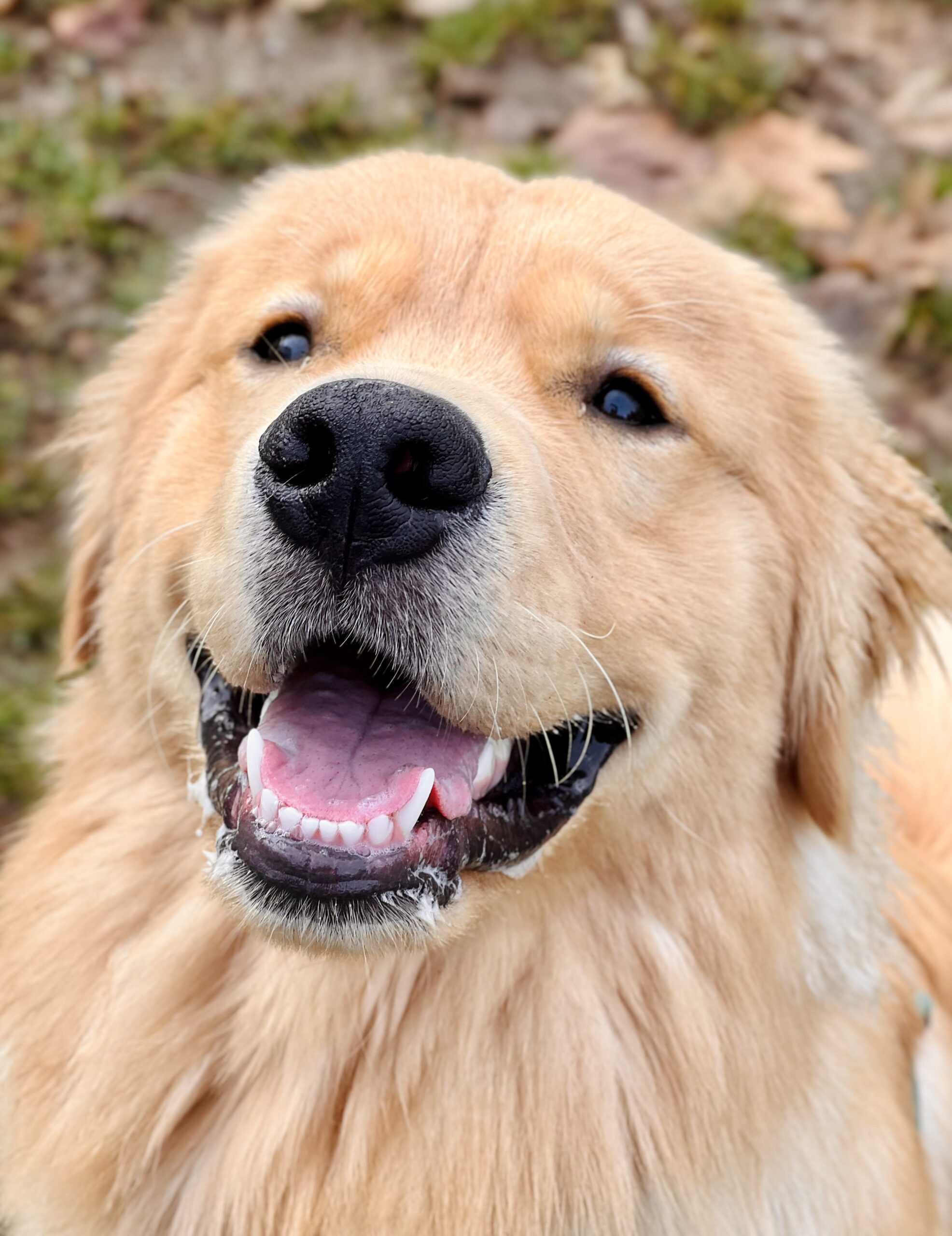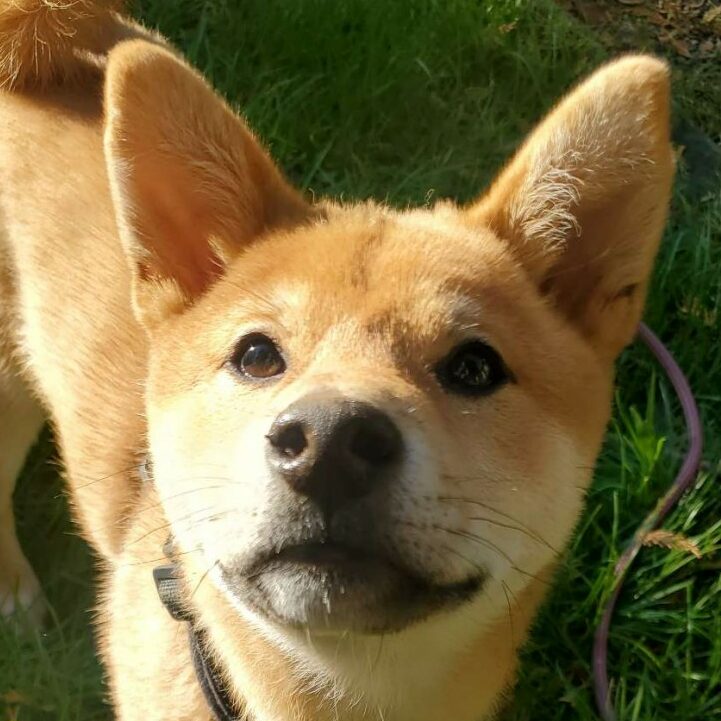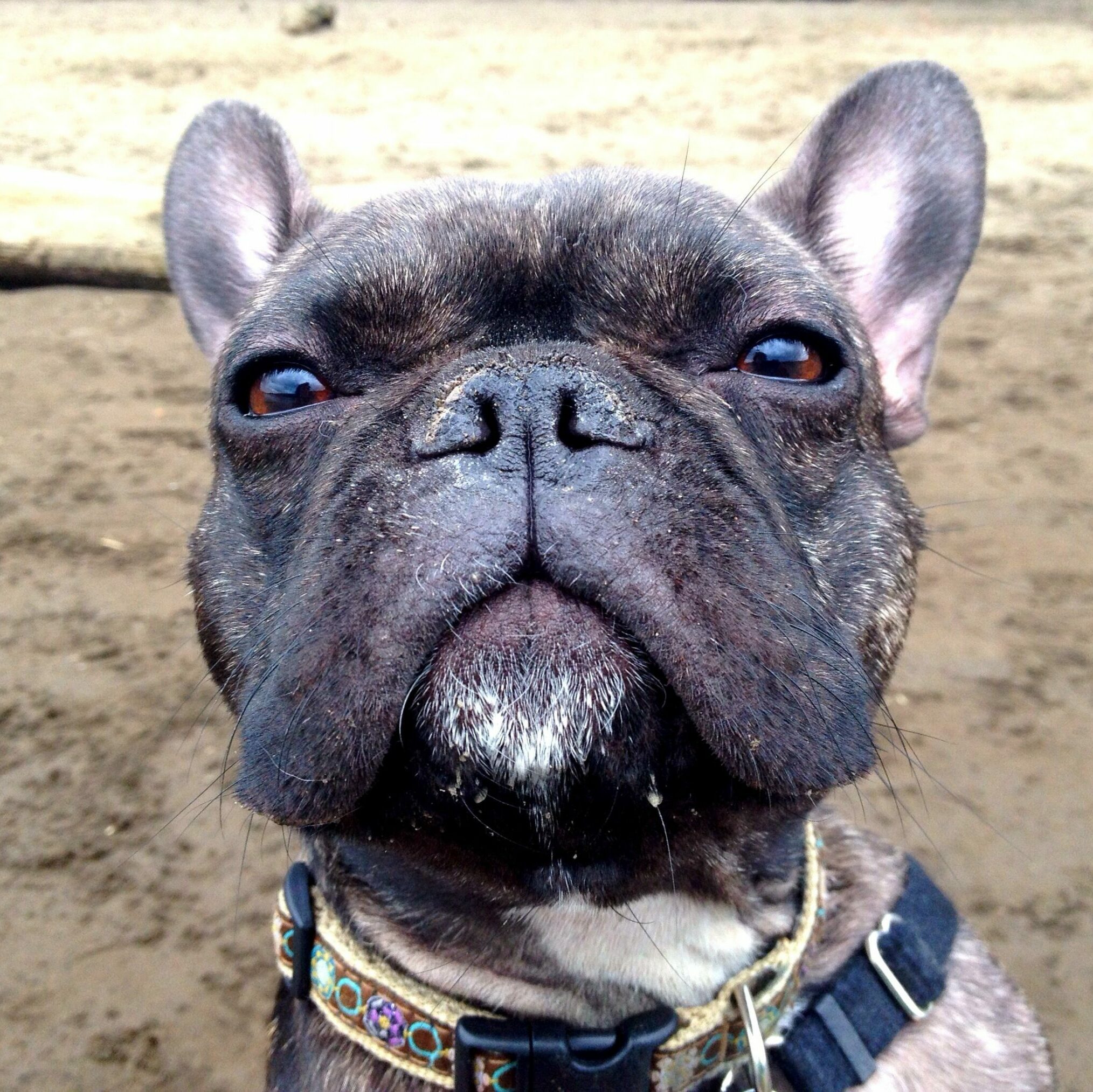Surviving Dog Adolescence, or
WHAT KIND OF FRESH HELL IS THIS
by Kerry Ryan, Certified Professional Dog Trainer and Family Dog Mediator
Me: Adolescent Dog Support Line, this is Kerry, how can I help you?
You: unintelligible weeping
A dog’s adolescent period usually appears between the ages of 6 to 9 months. If you’re lucky, you’ll be through the worst of it by 12-18 months. If you did something wrong in a past life, it will extend to their second birthday, or maybe even their third. And if you have a Retriever, it should wrap up by about age 14.
During a dog's adolescent period, various neurological and hormonal changes take place in their brain, and these changes can make things… difficult. While they are all part of the natural maturation process, it doesn’t change the fact that you may be questioning your sanity in ever thinking it would be a good idea to get a dog.

This is Sunny. She's 13 months old. Several hours after this photo, she pooped out an entire sand castle, fully formed.
You love your dog, of course you do. Your dog is a part of your heart. Your dog is a valued member of your family. You can’t imagine your life without your dog.
…………..but you don’t always like your dog, or whatever demon spawn your cute, sweet puppy has become.
In this guide to surviving your dog’s adolescence, we'll let you know what is happening in your gremlin’s brain, equip you with strategies to handle the teenage turmoil, and also maybe just hold you while you cry.
Activate Autonomy!
Tiny puppies are neurologically hardwired to stay close to their guardians. This makes sense evolutionarily: a solitary, helpless mammal would totally get eaten, ensuring that it would not continue its genetic line.
On the flip side, puppies are hardwired to seek independence as they mature. It is developmentally appropriate for a maturing mammal to lose inhibitions, take risks, and question authority. These are actually essential aspects of a juvenile's development, giving the dog the motivation they need to experiment with autonomy. In other words, the elements that make an adolescent challenging are actually vital in the development of a well-balanced adult.
This may give you little comfort when your dog begins to display selective hearing, is surprisingly hyper-active, seems to have forgotten all of their training, and is comfortable exploring the world on their own, but sometimes it's helpful to know that... nothing is wrong with your dog. This is exactly how your dog needs to be at this point in her development.
So how to handle this new autonomy? Find ways to give your dog freedom and choices, within your set parameters. Let them choose the route on a neighborhood walk, or the chewie they want from the treat cabinet, or where they sleep (only if they are no longer destructive, of course). Do what you can to give your pup a sense of agency.
Also, keep training, even if you have to go back to basic training lessons. It may seem like your training is not very impactful, but you are playing the long-game; the time, energy, and guidance you give your dog during this period will pay off.
Your Adolescent Dog’s Brain Is LITERALLY GROWING
The prefrontal cortex, responsible for decision-making, impulse control, and learning, undergoes tremendous development during adolescence. As neurons are literally disconnecting and reconnecting, strengthening and weakening, things are likely to go haywire. Your dog's operating system is updating and shit's gonna get weird.
The maturation process of the cortex also influences a dog's ability to regulate his behavior and focus on training, or anything else for that matter. As a puppy's brain is going through these monumental changes, it is common for the puppy to be quite dysregulated, have difficulty controlling impulsive behavior, and have a hard time focusing on training. It may even seem like all the training you did with them went out the window. But again, remember you are playing the long game. It will get better. Keep at it, knowing that you likely won't see the benefits of your efforts until you are on the other side.
Along with the cortex, the amygdala—the part of the brain associated with fight, flight, or fight and emotional processing—also undergoes massive changes during adolescence. Specifically, the inhibitory neurons are still learning, well, inhibition. This leads to heightened emotional responses and increased sensitivity to stimuli in the amygdala at the exact time that the prefrontal cortex is incapable of properly handling so many BIG feelings.
What to do here? Honestly, not much. Do your best to manage your dog's environment so that they are less likely to go over any kind of emotional threshold. And when they do, suddenly and inexplicably, just take a deep breath and remind yourself that all of this is normal.
So. Many. Hormones. Like... SO MANY.
While most adult male mammals have more testosterone than juveniles, an adolescent dog's testosterone levels are significantly higher than adult male's, especially if the dog is intact. This huge hormonal surge peaks at about ten months of age at a level that is five to seven times the level of an adult, only coming down to standard adult levels at about eighteen months of age. (Even neutered males are at the mercy of spiking testosterone, because the hormone is produced in the adrenal glands as well as the testes. Though, the spike for a neutered male is not nearly as significant.)

This is Bodhi. All he sees are hormones. He is tripping on hormones.
The rise in testosterone levels can influence various aspects of a male dog's behavior. Common behavioral changes include increased assertiveness, a desire to test social status, mood swings, distractibility, intense emotional responses to environmental stimuli, unpredictable behavior, increased excitability, and a greater interest in marking and defending territory. (FUN!) Because testosterone also triggers sexual maturity, male dogs may display behaviors associated with mating, including mounting, humping, and obsessing over a female in heat (or her urine). Note that an adolescent male's sexual behavior does not need to be associated with an interest in actually mating. Instead, sexual behavior will begin to surface at any level of arousal, including when an adolescent male is playing with his friends.
While some adolescent males become more assertive and potentially display aggressive behavior, it is also common for an adolescent male to be the target of bullying by adult males. The adult males are like, WHOA MR. TESTOSTERONE, SLOW YOUR ROLL. This shift often happens only a month or two after a dog loses his "puppy license," the thing that allowed him to get away with nonsense around adults. By ten months, not only does a young male no longer have permission to act like a dork, he may be actually targeted for any untoward behavior... or for no reason other than the levels of hormones in his body.
High levels of testosterone also encourage roaming behaviors. (It's easier to find a mate the more you move around.) Because of this, your recall-superstar-puppy may seem like he has forgotten his recall cue entirely. It's not that he's forgotten, it's just that there are far more significant influencers at play. Your puppy used to be entirely focused on you, but now he is learning that there is a whole world out there! This can be tremendously exciting to many young males. In wild canids, this is usually the point in their development when they leave their family and roam around as a "lone wolf." The pull for this independence is biologically intense for your pup. But, because we keep dogs in captivity in America, we can't just open the front door and let them go on a rumspringa. All of this can understandably lead to friction.
Female dogs experience hormonal changes as well, of course, notably a sharp increase in estrogen levels. One of the primary effects of increased estrogen is the onset of estrus, also known as being "in heat." This is the reproductive phase during which a female dog is receptive to mating. Female dogs in estrus may display changes in behavior, such as restlessness, increased vocalization, and a heightened interest in outdoor activities. Some female dogs become more affectionate, seeking attention and affection from their owners, while other females get downright... bitchy. Because... that is actually what they are.
Increased estrogen levels can also lead to urinary marking behavior. Female dogs may urinate more frequently and may be more inclined to mark their surroundings, both indoors and outdoors, to communicate their reproductive status.
Another fun thing about hormonal changes for females is that they become more attractive to male dogs. This can lead to increased attention from male dogs in the vicinity, manifesting primarily as being obsessively followed and/or mounted by males, which can be rather tiresome for dog and dog guardian alike.
It's important to note that the impact of hormonal changes varies among individual dogs, and not all male or female dogs will display the same behaviors during adolescence. Neutering, which involves the removal of the testes, can help mitigate some of the hormonal influences and associated behaviors. However, it's crucial to discuss the timing and implications of neutering with a veterinarian, as there are considerations regarding the dog's breed, health, and overall well-being.
All this is to say:
Your adolescent dog is SWIMMING IN HORMONES and at the mercy of a monumentally destabilizing body chemistry. Your dog will definitely appreciate your patience. It's not that your dog is intentionally being a punk... he truly, biochemically just can't help it. Do your absolute best to reinforce the bond between you and your pup during this time, as opposed to letting adolescence drive a wedge between you.

From "Puppy" to "Australian Shepherd"
Many young puppies act similarly to other puppies, regardless of their breed. As they hit adolescence, though, the behaviors that are common in their specific breed or breed mix will begin surfacing, which can throw dog guardians for a real loop. Your baby Australian Shepherd may have been bombproof as a young puppy, for example, happy to jump into all sorts of novel circumstances with enthusiasm. Now that he is approaching adolescence, however, he might start being suspicious of strangers, weirded out by fire hydrants, and uncomfortable with shadows. Is your puppy broken? No, his brain is just figuring out the transition from "baby" to "Aussie," a breed that tends to be more sensitive to changes in the environment. There can be bumps in the road as things progress.
You certainly do not have the same behaviors you had when you were a child, because that would almost surely get you arrested. And can you harken back to how awkward the transition between childhood and adulthood was for you? I wore pegged Hammer pants, a hypercolor tee-shirt, and a greek fisherman's hat for the entirety of sixth grade, for chrissake. IT IS A REALLY WEIRD TIME IN ANY MAMMAL'S LIFE.
Again, the absolute best way to deal with these genetic changes is to preserve the positive bond with your pup. There are a number of things you cannot change about adolescence. In fact, just about everything is out of your control, except for the quality of your relationship.
Coping Strategies for Dog Adolescence
Sometimes all it takes is a better understanding of the underlying processes shaping a dog's behavior during adolescence to give a dog guardian a bit more patience. But for some concrete coping strategies, try any one of the following:
You got this.
Navigating your dog's adolescence can be a challenging journey, but it will pay off in the end. Patience, consistency, and understanding are key during this phase. With a little bit of effort, patience, and humor, you can strengthen the bond between you and your pup and guide them into becoming a well-mannered and delightful adult dog. Embrace the journey, celebrate the small victories, and reinforce the unique connection you share... as you both navigate these tumultuous times together.
Learn more about dog adolescence...
Listen: Your Adolescent Dog, Holly Tett, Letters from Your Dog
Listen: The "Teenage Phase"/Adolescent Dog with Dr. Naomi Harvey, Brian Burton, Dogs Unknown
Listen: Teenage Tyrants, Sarah Stremming, Cog-Dog Radio (Sarah also offers a Teenage Tyrants course!)
Watch: What to Train During Adolescence, Emily Larlham, Kikopup
Watch: Understanding Your Adolescent Dog: Teenage Hormones, Emotions, and Behavior, Susan Garrett, Dogs That
Watch: How to Train a Dog Going Through the Teenage Phase, Zak George, Zak George's Dog Training Revolution

It's a good thing they're so cute.
Read: Angst With Your Adolescent Dog, Pat Miller, Whole Dog Journal
Read: When Your Dog is a Teenager, Alexandra Horowitz, The New York Times
Read: The Year of the Puppy, How Dogs Become Themselves, Andrea Horowitz
Read: Dogs get difficult when they reach adolescence, just like human teenagers, Virginia Morell, Science Magazine
Read: Angst with Your Adolescent Dog, Nancy Kerns, Whole Dog Journal





